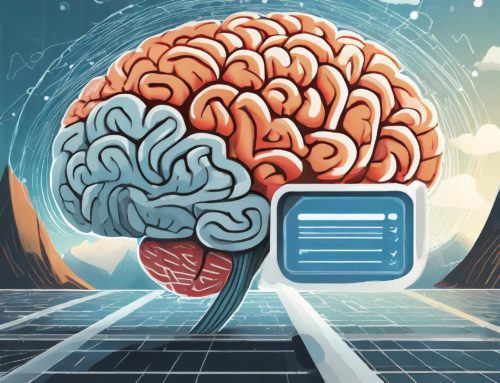The increasing prominence of large language models (LLMs) has concurrently heightened interest in embedding models. These deep learning systems are adept at distilling various data types into numerical representations, representing a crucial facet of retrieval-augmented generation (RAG), a significant application of LLMs in enterprise environments. However, the scope of embedding models extends well beyond their current application in RAG, with the previous year witnessing substantial progress in this domain and 2024 anticipated to bring further advancements.
Understanding Embeddings
At their core, embeddings convert data, whether images or text documents, into numerical arrays that encapsulate key attributes. These models undergo training on extensive datasets to discern features critical for distinguishing different data types.
In the sphere of computer vision, embeddings encapsulate pivotal aspects like object presence, shapes, colors, and other visual patterns. Text-based applications see embeddings capturing semantic elements, encompassing concepts, geographic locations, entities, and various objects.
Embeddings in RAG Applications
In RAG contexts, embedding models encode characteristics of an organization’s documents. Each document’s embedding is cataloged in a vector store, a database optimized for logging and comparing embeddings. During the inference process, the system computes embeddings for new prompts and consults the vector database to identify documents with closely aligned embeddings. The content of these relevant documents is then incorporated into the prompt, guiding the LLM to generate responses influenced by these documents.
This mechanism is instrumental in tailoring LLMs to generate responses based on specific, proprietary documents or information not included in their initial training data. It also addresses issues like hallucinations in LLMs, where the generation of inaccurate facts stems from inadequate information.
Extending Beyond Traditional RAG
Retrieval-augmented generation (RAG) has significantly enhanced the capabilities of large language models (LLMs), yet the applications of retrieval and embeddings extend far beyond mere alignment of prompts to documents. These technologies are not limited to retrieval and visualization but encompass a wide range of more complex functionalities.
Retrieval plays a pivotal role in various LLM use cases. Tools and frameworks have been developed to facilitate the matching of LLM prompts with diverse tasks and data types. This includes sending commands to SQL databases, extracting information from structured data, enabling long-form generation, and automating workflows through intelligent agents. Retrieval is essential for providing relevant context to LLMs, a critical factor in most enterprise-level applications.
Broader Applications of Embeddings
Embeddings have potential uses that surpass basic document retrieval. For instance, a study conducted by researchers from the University of Illinois at Urbana-Champaign and Tsinghua University demonstrated the use of embedding models in reducing the training costs of coding LLMs. They devised a method employing embeddings to select the smallest yet most diverse and representative subset of a dataset. This subset encompasses various task types the LLM needs to perform. By adopting this technique, it became possible to train the model effectively with a reduced number of examples, maintaining high-quality output. This approach exemplifies the expanding scope and utility of embedding models in enhancing the efficiency and effectiveness of LLM training processes.
Leveraging Embeddings in Enterprise Applications
Vector embeddings have revolutionized the handling of unstructured and semi-structured data. While semantic search, of which RAG is a variant, is a prominent application, the potential uses extend much further. The integration of non-textual data types like images, audio, and video is a growing area of focus, and advancements in multimodal transformers are set to enhance this capability.
Companies like Qdrant are already utilizing embeddings in diverse applications such as anomaly detection, recommendation systems, and time-series processing. The versatility of embeddings is increasingly recognized, with new use cases emerging alongside the development of advanced embedding models.
Embedding models are particularly useful for enterprises inundated with large volumes of unstructured data. They are instrumental in categorizing and analyzing customer feedback or social media posts, enabling the detection of trends, thematic patterns, and shifts in sentiment.
The Evolution of Fine-Tuned Embeddings
The year 2023 marked significant progress in fine-tuning LLMs with custom datasets, though challenges persist. Currently, fine-tuning is primarily undertaken by companies with substantial data resources and expertise.
One of the complexities of fine-tuning embeddings lies in their sensitivity to data variations. For instance, embeddings trained on short search queries may underperform on longer queries and similarly, training on specific question types may limit their effectiveness on others.
While enterprises with robust in-house machine learning teams can potentially make effective use of fine-tuned embeddings, many opt for out-of-the-box solutions due to the complexity involved.
However, recent studies, such as one by Microsoft, indicate advancements in streamlining the training process for embedding models. They have demonstrated that pre-trained LLMs, like Mistral-7B, can be effectively fine-tuned for embedding tasks using smaller datasets generated by powerful LLMs. This approach simplifies the traditionally labor-intensive and costly process of data acquisition and training.
Given the rapid progress in LLMs and embedding models, the near future is poised to unveil more groundbreaking developments in this domain.





Leave A Comment